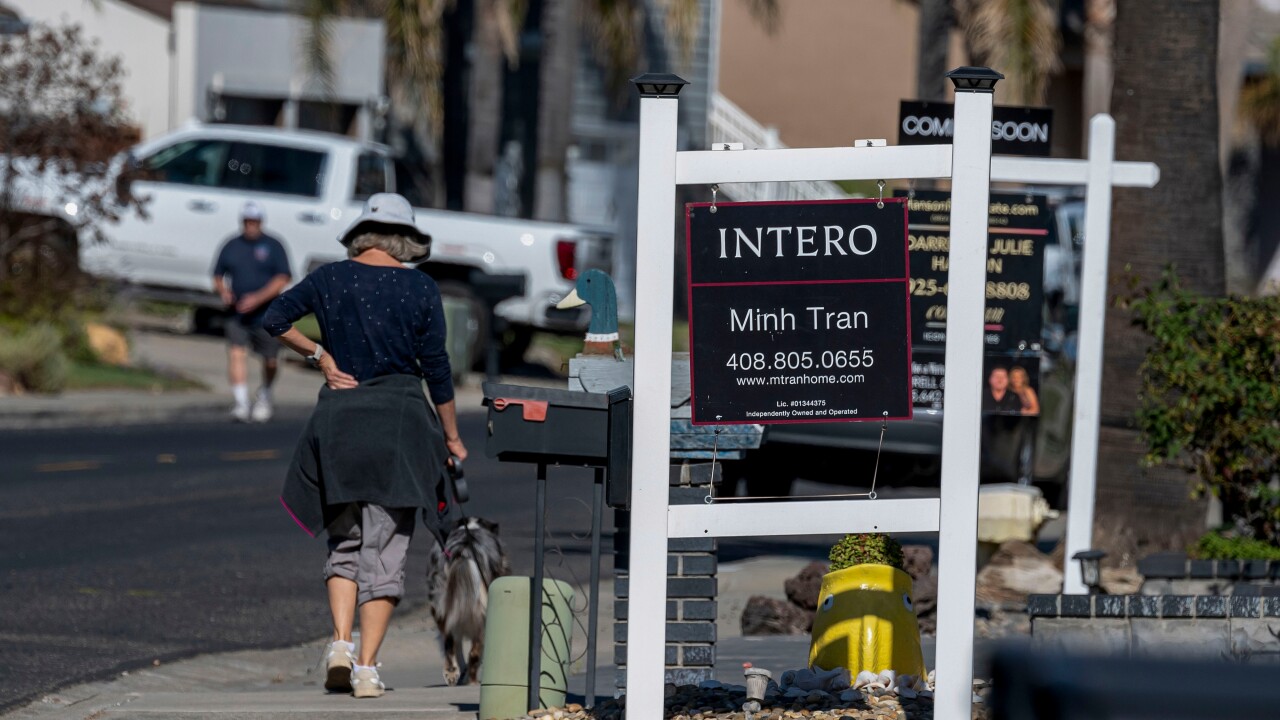
The new president and chief executive of United Guaranty Corp. said the private mortgage insurance business will “kick it up a notch” as it goes along its contrarian path of risk-based pricing.
Numbers provided by UG show the company took its market share from 19.5% of new insurance written in the first quarter of last year, which ranked it third, to 30.1% for the third quarter (the period in which the most recent data are available), tops among the private MIs.
Kim Garland, who previously had been chief operating officer under former UG president Eric Martinez—promoted by parent company American International Group to executive vice president of global claims, operations and systems at Chartis, AIG's property and casualty insurance unit—had worked closely with Martinez and the strategy they had been pursuing, especially pushing risk-based pricing for mortgage insurance policies, will continue.
Garland came on board at UG in July 2009 as its chief operating officer one month after AIG installed Martinez as president and CEO at the mortgage insurer. Both men did not have a prior background in the mortgage insurance business when they started at UG.
Both came to AIG from Safeco. Garland was president, Open Seas Solutions group for Safeco, where he led the company's innovation team that developed a number of unique insurance-related products and services. Before that, he was vice resident, auto product management at Safeco and he has held various senior management and actuarial positions at Safeco and GEICO.
“We think the mortgage insurance industry blew up for several reasons and we've been spending all of time trying to do things differently so that does not happen again and we will continue to do that in the future,” Garland told National Mortgage News.
Towards this end, UG rolled out Performance Premium in 2010, its version of risk-based pricing. He called it “a simple concept,” with better quality borrowers being charged a lower premium than those considered to be in a higher risk category.
Garland said this product is a driver of UG's NIW growth “exponentially over the last two years.”
The program is being refined and on March 12 UG will rolling out its next iteration, he said, adding the company has found more segments of borrowers it can give a better premium rate to.
Then there is CoverEdge, an underwriting process that UG has developed addressing the factors that most commonly lead to denials, rescissions and payment delays when claims are filed. These include a lack of documentation, loss attributes which change prior to the loan closing, underwriting issues and fraud and misrepresentations.
Garland said UG's management saw problems inherent in the mortgage industry representations and warranties model, where the file was not actually underwritten but rather gave a guaranty that the information provided was accurate.
“I think history has shown that it is a flawed model and will not work and if it that does not change, these cycles will repeat themselves over and over again,” he said.
With CoverEdge, UG does a thorough job of underwriting the file at the time of origination as well as immediately after the loan closes.
Fannie Mae had previously approved the process and more recently Freddie Mac said loans using CoverEdge underwriting were eligible for sale to it.
Because UG is underwriting the file, it is assuming the buyback/rescission of coverage risk. Because it reduces this risk for lenders, the company thinks this will matter to many in the mortgage industry.
With things like Premium Pricing and CoverEdge, “we are heading one way and the rest of our competitors are heading another way,” Garland declared.
The exit of PMI and Republic Mortgage Insurance Co. from the underwriting arena had little effect on its third-quarter market share growth, he said. When the fourth-quarter numbers are available, it would show that UG and Radian benefited most from dislocation in the marketplace.
Like Radian, which has been very vocal about its attempts to gain market share, UG has made significant additions to sales force with the same goal.
In mid-February, it held an employee orientation session for 20 new sales people; nine months ago, it had another class of 20 sales people come aboard.
“What we found is there were areas of the country where we had the right product offering, but there were gaps in coverage” by its sales staff of certain locations.
It is not just new sales people being hired. UG also has doubled the number of underwriters in the last nine months.
Having that background from outside the mortgage banking/mortgage insurance business led Martinez and Garland to look at UG as a traditional insurance company. Insurance companies have to have four characteristics, Garland said.
It has to be financially strong, with enough capital to pay its claims. It has to have great front-end underwriting capability to screen out uninsurable and fraudulent applications. It has to have a great pricing capability to make sure each application is priced accurately and it has to have great claims handling.
These are fundamentals of such personal lines as automobile and homeowners insurance. But Garland said, historically, most MIs did not think of the business in this way.
Because of the mortgage servicer settlement, 2012 “will be the year of reckoning on financial strength and claims payments” for the mortgage insurance industry, he said, as loans in the delinquent inventory finally go into the foreclosure process.
“I think the financially strong mortgage insurers will be in a better position once that cycle ends,” Garland said. UG is strong financial shape and eager to rid itself of these legacy claims.





